Comprehensive Guide to Garden Maintenance in Noranda
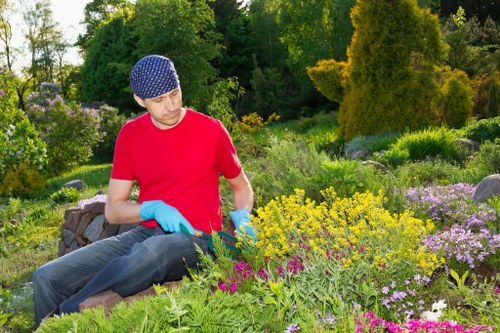
Introduction to Garden Maintenance
Maintaining a beautiful garden in Noranda requires dedication, knowledge, and the right set of tools. Whether you're a seasoned gardener or a beginner, understanding the unique climate and soil conditions of Noranda is essential for thriving plants. This guide offers detailed insights into effective garden maintenance practices tailored specifically for the Noranda area.
Regular maintenance not only enhances the aesthetic appeal of your garden but also promotes the health and longevity of your plants. From soil preparation to pest control, each aspect plays a critical role in achieving a lush and vibrant garden.
In the following sections, we'll explore various strategies and tips to keep your garden in Noranda flourishing throughout the seasons.
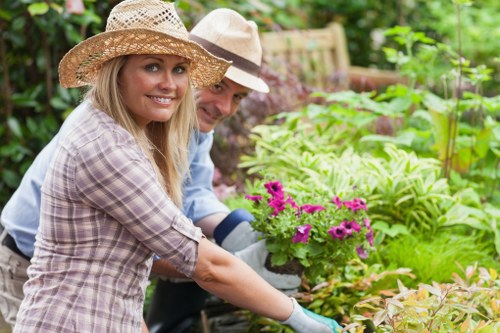
Soil Preparation and Improvement
Understanding Noranda’s Soil
The foundation of any successful garden is the soil. In Noranda, the soil composition can vary, but it generally ranges from sandy loam to clay. Understanding your soil type is the first step in effective garden maintenance.
Testing Your Soil: Conduct a soil test to determine its pH level, nutrient content, and texture. This information is crucial for selecting the right plants and amendments.
Improving Soil Quality: Amend your soil with organic matter such as compost or well-rotted manure. This enhances soil structure, increases nutrient availability, and promotes beneficial microbial activity.
- Add compost to improve soil fertility.
- Incorporate peat moss to enhance moisture retention.
- Use lime or sulfur to adjust pH levels as needed.
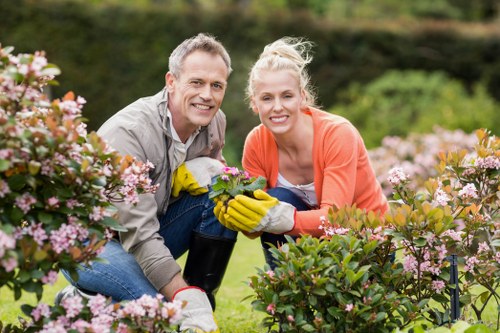
Plant Selection and Care
Choosing Appropriate Plants
Selecting plants that are well-suited to Noranda’s climate is paramount. Opt for native species or those adapted to similar environmental conditions to ensure resilience and ease of maintenance.
Seasonal Planting: Consider the seasonal variations in Noranda when planning your garden. Choose a mix of perennials, annuals, shrubs, and trees that thrive in different seasons.
Watering Needs: Group plants with similar watering requirements together to optimize irrigation efficiency and prevent overwatering or underwatering.
- Select native plants for better adaptability.
- Plant a variety of species to create a balanced ecosystem.
- Ensure proper spacing to allow for growth and air circulation.
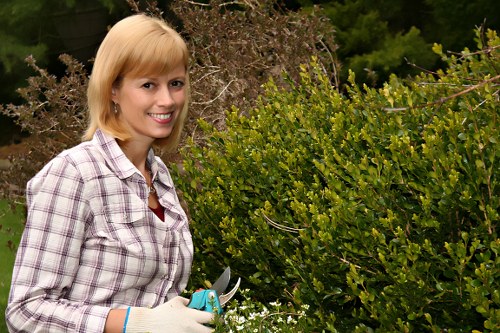
Pest and Disease Management
Identifying Common Pests
Pests can pose a significant threat to your garden's health. Familiarize yourself with common pests in Noranda, such as aphids, slugs, and spider mites, to implement timely control measures.
Preventative Measures: Maintain garden hygiene by removing debris and weeds that can harbor pests. Encourage beneficial insects like ladybugs and predatory beetles to naturally keep pest populations in check.
Organic Treatments: Use eco-friendly pesticides and natural remedies to manage infestations without harming the environment or beneficial organisms.
- Introduce beneficial insects to reduce pest numbers.
- Use neem oil or insecticidal soap for organic pest control.
- Implement crop rotation to prevent disease buildup.
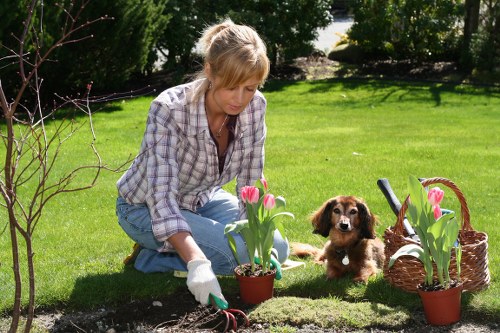
Seasonal Maintenance Tips
Spring Care
Spring is a critical time for garden preparation in Noranda. Start by cleaning up any leftover debris from the winter, pruning dead branches, and preparing beds for new plantings.
Fertilization: Apply a balanced fertilizer to provide essential nutrients as plants begin their growth cycle.
Mulching: Add mulch to conserve moisture, suppress weeds, and regulate soil temperature.
Summer Maintenance
During the summer months, focus on regular watering, especially during dry spells. Monitor for pests and diseases, and take action promptly to prevent damage.
Pruning: Trim overgrown branches to improve air circulation and reduce the risk of fungal infections.
Harvesting: Regularly harvest fruits and vegetables to encourage continuous production and prevent overripe produce from attracting pests.
- Ensure consistent watering schedules.
- Provide shade for plants susceptible to heat stress.
- Use stakes or trellises to support climbing plants.
Tools and Equipment for Effective Maintenance

Essential Gardening Tools
Having the right tools can make garden maintenance in Noranda much more manageable. Invest in high-quality equipment to ensure efficiency and longevity.
Basic Tools: Shovels, rakes, pruners, and hoes are indispensable for daily garden tasks.
Advanced Equipment: Consider power tools like lawnmowers, tillers, and irrigation systems for larger gardens to save time and effort.
- Quality pruners for precise trimming.
- Durable gloves to protect your hands.
- Wheelbarrows for easy transport of materials.
Maintenance of Tools
Proper maintenance of your gardening tools ensures they remain effective and safe to use. Clean tools after each use, sharpen blades regularly, and store them in a dry place to prevent rust and damage.
Storage Solutions: Use tool sheds or storage racks to organize your equipment and keep them easily accessible.
Safety Practices: Always follow safety guidelines when using tools, especially power equipment, to prevent accidents and injuries.
Local Gardening Services in Noranda
Why Hire Professional Gardeners?
Maintaining a garden can be time-consuming and labor-intensive. Hiring professional gardening services in Noranda can help ensure your garden remains healthy and beautiful year-round.
Expertise: Professional gardeners possess the knowledge and experience to address specific challenges related to Noranda’s climate and soil conditions.
Customized Services: From landscape design to routine maintenance, professionals offer tailored solutions to meet your garden’s unique needs.
- Comprehensive garden assessments and planning.
- Regular maintenance schedules including mowing, pruning, and fertilizing.
- Specialized services like pest control and soil amendment.
Choosing the Right Service Provider
When selecting a garden maintenance service in Noranda, consider factors such as experience, customer reviews, and the range of services offered. Ensure they understand your vision and can provide personalized care for your garden.
Certifications: Look for licensed and insured professionals to guarantee quality and reliability.
Cost Considerations: Compare quotes and service packages to find a provider that offers good value without compromising on quality.
10-15 Nearby Areas to Noranda for Garden Maintenance Services
Noranda is surrounded by several communities that also benefit from professional garden maintenance services. Here are some of the closest areas:
- Notre-Dame-de-Grâce: Located just north of Noranda, offering extensive green spaces and community gardens.
- Lachine: Situated to the southwest, known for its historic gardens and waterfront parks.
- Ville-Émard: East of Noranda, featuring diverse plant species and residential gardens.
- Saint-Henri: Northwest of Noranda, with a focus on sustainable gardening practices.
- Verdun: Southeast, famous for its botanical diversity and public green areas.
- Notre-Dame-des-Neiges: Northwest, home to numerous community gardens and green initiatives.
- Outremont: Northeast, known for its elegant gardens and meticulous landscaping.
- Pangman: Directly bordering Noranda, sharing similar climate and soil conditions.
- Rivière-des-Prairies: Further east, offering a mix of urban and suburban gardening environments.
- Rosemont–La Petite-Patrie: Southeast, with vibrant gardens and active gardening communities.
- Ahuntsic: North, featuring both residential and community gardening projects.
- Villeray: West, known for its urban gardens and green rooftops.
- Mercier–Hochelaga-Maisonneuve: Farther southeast, integrating traditional and modern gardening techniques.
- Montréal-Nord: Northeast, with a growing number of gardening enthusiasts and services.
- Plateau-Mont-Royal: Central area, renowned for its artistic and eclectic garden styles.
Sustainable Gardening Practices in Noranda
Eco-Friendly Techniques
Sustainability is becoming increasingly important in garden maintenance. Implementing eco-friendly practices not only benefits the environment but also enhances the health of your garden.
Composting: Recycle kitchen and garden waste into nutrient-rich compost to improve soil fertility naturally.
Water Conservation: Utilize rain barrels and drip irrigation systems to minimize water usage and ensure efficient watering.
- Use organic fertilizers to reduce chemical runoff.
- Implement crop rotation to maintain soil health.
- Plant native species to support local biodiversity.
Organic Pest Control
Managing pests organically helps maintain a balanced ecosystem in your garden. Techniques include introducing natural predators, using barriers, and applying organic pesticides when necessary.
Beneficial Insects: Encourage ladybugs, lacewings, and other beneficial insects that prey on common garden pests.
Natural Remedies: Apply neem oil, garlic spray, or insecticidal soap to control pest populations without harming beneficial organisms.
Advanced Gardening Techniques
Mulching and Its Benefits
Mulching is a crucial practice in garden maintenance that offers numerous benefits, including moisture retention, temperature regulation, and weed suppression.
Types of Mulch: Organic mulches like bark, straw, and compost enrich the soil as they decompose, while inorganic mulches like gravel and plastic provide long-term weed control.
Application Tips: Apply a 2-3 inch layer of mulch around plants, keeping it a few inches away from stems and trunks to prevent rot.
- Use mulch to reduce water evaporation from the soil.
- Enhance the visual appeal of your garden beds.
- Prevent soil erosion during heavy rains.
Pruning and Trimming
Regular pruning and trimming are essential for maintaining the shape, health, and productivity of plants. Proper pruning encourages new growth and removes dead or diseased branches.
When to Prune: The best time to prune most plants in Noranda is during late winter or early spring before new growth begins.
Pruning Techniques: Use clean, sharp tools to make precise cuts. Focus on removing crossing branches, thinning dense areas, and shaping the plant for optimal growth.
Landscaping Ideas for Noranda Gardens
Designing Your Garden Layout
A well-designed garden layout enhances both functionality and aesthetics. Consider factors such as plant height, color schemes, and spatial arrangement to create a harmonious outdoor space.
Layering Plants: Arrange plants in layers, with taller species at the back and shorter ones in the front, to add depth and visual interest.
Color Coordination: Choose complementary colors to create a cohesive and vibrant garden palette.
- Incorporate pathways to guide visitors through your garden.
- Add focal points like garden statues or water features.
- Use raised beds or containers for diverse planting options.
Incorporating Hardscaping Elements
Hardscaping features such as patios, decks, and pergolas add structure and functionality to your garden space. These elements provide areas for outdoor living and enhance the overall design.
Materials: Choose durable materials like stone, wood, or metal that complement your garden’s aesthetic and withstand Noranda’s climate.
Integration: Seamlessly blend hardscaping with softscaping by using complementary colors and textures.
Year-Round Garden Maintenance Schedule
Monthly Maintenance Tasks
Adhering to a monthly maintenance schedule ensures that your garden remains in optimal condition throughout the year. Here’s a breakdown of essential tasks for each month:
- January: Plan your garden layout and order seeds or plants for the upcoming season.
- February: Start indoor seed sowing and prune dormant trees and shrubs.
- March: Prepare garden beds, apply compost, and start planting hardy vegetables.
- April: Begin regular watering schedules and mulch garden beds.
- May: Plant annuals and perennials, and set up irrigation systems.
- June: Monitor for pests and diseases, and perform mid-season pruning.
- July: Deep water plants during dry spells and harvest early crops.
- August: Prepare for fall planting by adding compost and fertilizing.
- September: Start planting bulbs for spring and reduce watering frequency.
- October: Clean up garden beds, mulch, and protect sensitive plants from frost.
- November: Prune deciduous trees and shrubs, and store tools properly.
- December: Review garden performance and plan improvements for the next year.
Seasonal Adjustments
Adjust your garden maintenance practices based on seasonal changes to ensure plant health and garden beauty year-round.
Spring: Focus on planting, soil preparation, and pest control.
Summer: Emphasize watering, weeding, and harvesting.
Autumn: Concentrate on cleanup, soil enrichment, and preparing for winter.
Winter: Protect plants from cold, plan for the next growing season, and perform tool maintenance.
DIY vs. Professional Garden Maintenance
Pros and Cons of DIY Maintenance
While DIY garden maintenance can be cost-effective and rewarding, it also requires time, effort, and a certain level of expertise. Assess your personal skills and available time before deciding to maintain your garden independently.
Advantages: Cost savings, personal satisfaction, and complete control over garden practices.
Disadvantages: Time-consuming, potential for mistakes, and limited access to professional tools and knowledge.
- Manageable for small to medium-sized gardens.
- Requires ongoing learning and dedication.
- Ideal for hobbyists and gardening enthusiasts.
Benefits of Hiring Professionals
Professional garden maintenance services offer expertise, efficiency, and comprehensive care that may be challenging to achieve on your own.
Expert Knowledge: Professionals are well-versed in plant care, pest management, and landscape design specific to Noranda’s conditions.
Time Efficiency: Outsourcing maintenance frees up your time for other activities while ensuring your garden receives consistent attention.
- Access to specialized equipment and tools.
- Ongoing support and maintenance plans.
- Enhanced garden aesthetics and health.
Conclusion
Achieving a Thriving Garden in Noranda
Effective garden maintenance in Noranda involves a combination of proper planning, regular care, and the implementation of sustainable practices. Whether you choose to maintain your garden yourself or hire professionals, understanding the local climate, soil conditions, and best gardening practices is crucial for success.
Take Action: Start by assessing your garden’s current state, identify areas for improvement, and implement the strategies discussed in this guide.
Stay Informed: Continuously educate yourself on new gardening techniques and stay updated with local gardening trends to keep your garden vibrant and healthy.
Engage with the Community: Connect with local gardening groups or services in Noranda to share experiences, gain insights, and enhance your gardening skills.
Contact us today to schedule a consultation and take the first step towards a beautiful and thriving garden in Noranda. Book your service now and transform your outdoor space into a lush, serene haven.
